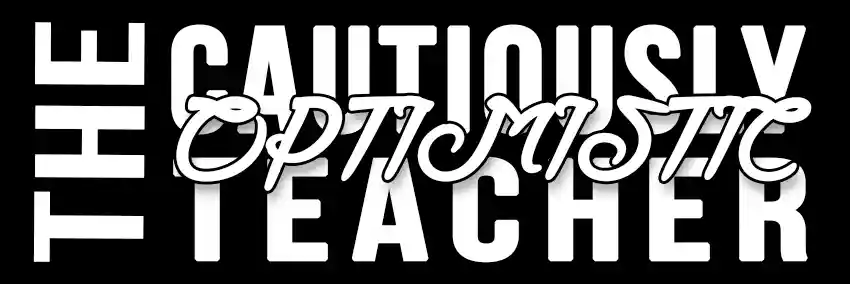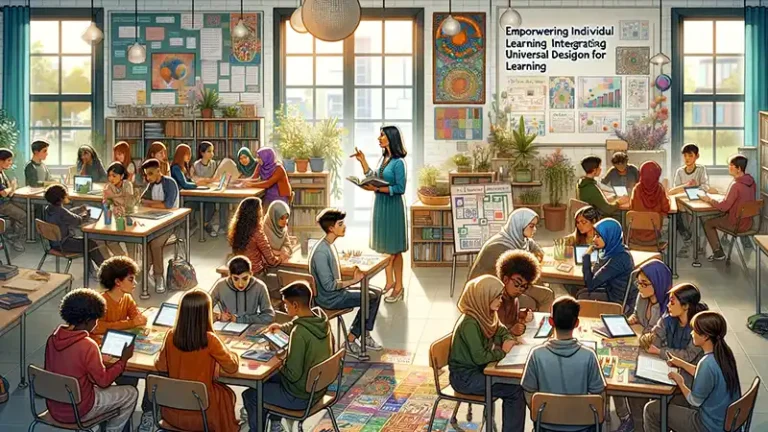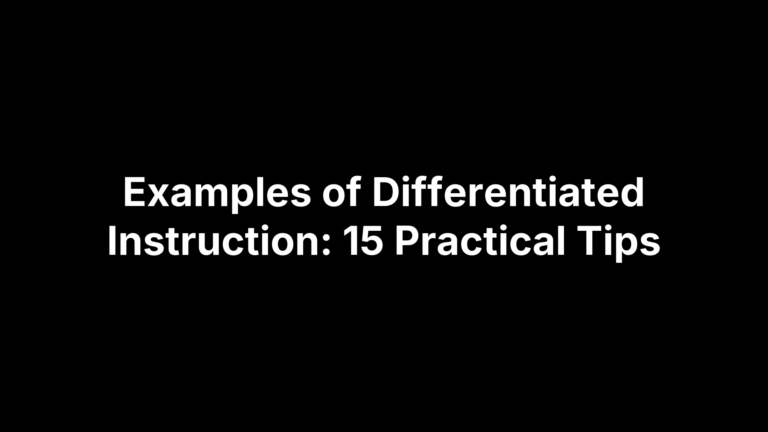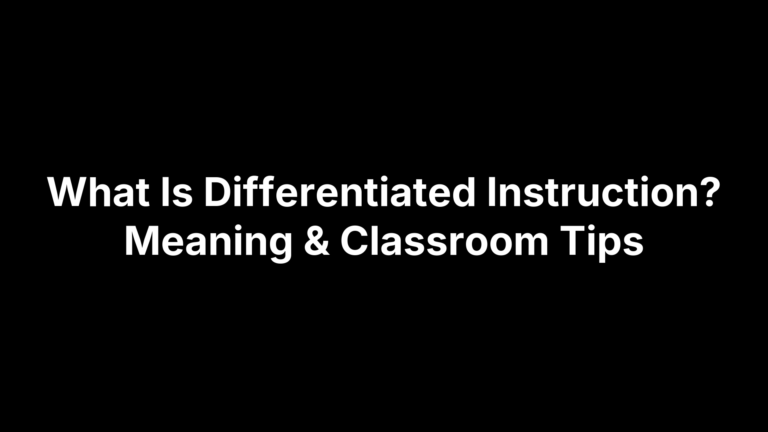Success with Differentiated Instruction in History Classrooms
From the hallowed halls of ancient academies to the modern dynamic classrooms of today, the method and manner in which history is taught have seen considerable transformations. When I first set foot in a history classroom, I was greeted with the traditional methods – linear timelines, monolithic perspectives, and the age-old mantra of memorization. Dates and events were prioritized, while the intricate web of human experiences and diverse narratives often took a backseat. However, as education evolved, I was introduced to a refreshing paradigm: differentiated instruction. This approach is not just a buzzword but an essential transition to cater to the multifaceted minds of our students, accentuating the richness of history as a subject.
Understanding Differentiated Teaching
But what exactly is differentiated teaching? At its core, differentiated instruction is a teaching philosophy and methodology which acknowledges and responds to the unique learning needs and preferences of individual students. It’s like a master chef preparing a meal; while the ingredients might be the same, the proportions and methods can be tweaked to cater to varied tastes. The fundamental principle is that teaching should be adaptable, ensuring that all students, irrespective of their starting point, can grasp, engage with, and appreciate the content.
Differentiating in the classroom doesn’t mean creating a unique lesson for every student, but rather tailoring the teaching experience based on three primary factors: readiness, interest, and learning profile.
Readiness: This pertains to where a student currently stands in terms of their understanding of a topic. Differentiated teaching means providing more challenging tasks for students who have already grasped the basic concepts and offering targeted support for those who need a bit more help. In a history class, while some might be ready to critically analyze a historical event, others might still be familiarizing themselves with its basic facts.
Interest: History, with its vast tapestry of events, characters, and narratives, offers a myriad of topics that can pique a student’s curiosity. Differentiated teaching taps into these interests, offering avenues for students to dive deeper into areas they’re passionate about. For instance, while one student might be fascinated by ancient civilizations, another might be enthralled by modern history.
Learning Profile: Every student has a unique way of absorbing and processing information. Some might be visual learners, using charts and graphics, while others might lean towards auditory methods, relying on discussions and lectures. Differentiated teaching respects these profiles, offering diverse methods to ensure that the learning experience resonates with every individual.
In my journey as an educator, I have come to appreciate the nuanced approach that differentiated teaching offers. It moves away from the one-size-fits-all methodology, bringing the vibrant world of history to life in ways that are meaningful, engaging, and tailored for every student. The beauty of history lies in its diverse stories, and what better way to honor this diversity than by adopting a teaching approach that celebrates individuality?
Why Differentiated Teaching is Essential for History Classrooms
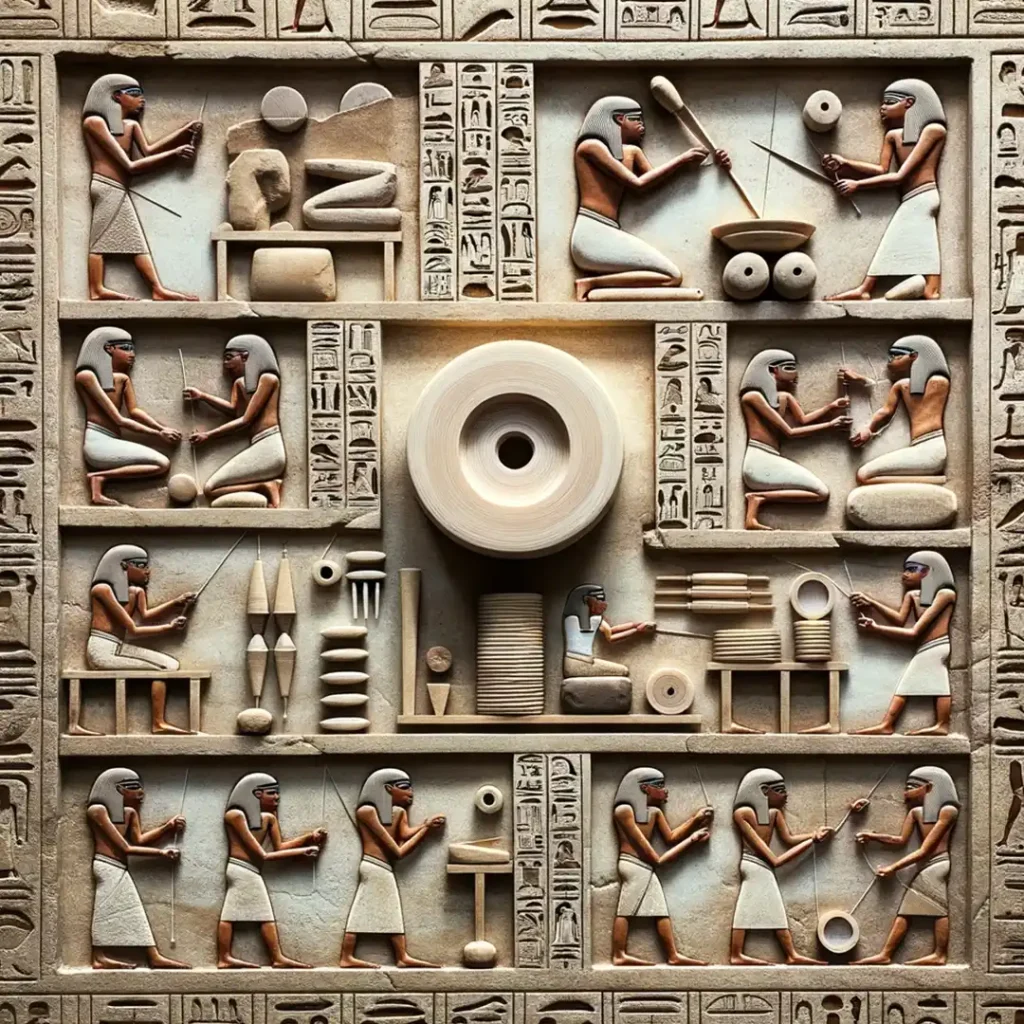
Embarking deeper into the world of education, I’ve often reflected upon the very essence of history as a subject. History, more than just a record of past events, serves as a mirror to humanity’s soul, revealing patterns, revolutions, and paradoxes. In this voyage through time, it becomes evident that teaching history requires more than just a conventional approach. Here’s why differentiated teaching emerges as the touchstone for history classrooms:
The Diverse Nature of History Students
Step into any history class, and you’ll find a mosaic of students, each bringing their unique backgrounds, abilities, and interests to the table. Some come with a personal connection to historical events, their families having played a role or having been impacted by them. Others might view history through the prism of sheer curiosity, desiring to unravel the mysteries of bygone eras. Then there are those who, perhaps, view history with a degree of apprehension, grappling with the challenge of connecting past events to the present and future.
Differentiated teaching is essential because it recognizes this diversity. It acknowledges that a student from a lineage of war veterans might resonate with military history differently than someone whose ancestors were artists during the Renaissance. Their abilities, too, are varied – from those who can draw insightful connections between disparate events to those who excel at remembering specific dates, places, and figures. Catering to this wide spectrum means moving away from a monolithic teaching style to one that is as varied as the students themselves.
The Complex Narratives and Multiple Perspectives in History
History is not a linear, one-dimensional story. It’s a web of interconnected narratives, each offering a different perspective on events. The French Revolution, for instance, isn’t just about the fall of the Bastille or the reign of terror. It’s about the whispers in Parisian alleyways, the philosophical debates in salons, the plights of the peasantry, and the dilemmas of the nobility.
Teaching history requires an acknowledgment of these multiple perspectives. A single textbook or a singular narrative can’t possibly capture the entirety of an event or era. Differentiated teaching, in its essence, recognizes this. It offers students the chance to delve into a topic from various angles, encouraging critical thinking and fostering empathy. When a student can understand both the motivations of the American revolutionaries and the challenges faced by the British monarchy, they gain a more holistic view of the American Revolution.
Benefits of Implementing Differentiated Methods
As an educator, the ultimate goal is not just to impart knowledge but to ignite a passion for learning, to foster critical thinkers, and to prepare students for a world teeming with diverse experiences and challenges. Over the years, the differentiated approach has been my compass in this journey. Here’s how it transformed my classroom:
Enhanced Student Engagement
Personalized Learning Paths Connecting with Individual Interests: Imagine a student passionate about women’s rights diving deep into the suffragette movement or another intrigued by technological advancements exploring the Industrial Revolution’s intricacies. Differentiated teaching allows for these tailored paths, ensuring that learning isn’t just a task but a journey of discovery.
Activities that Cater to Varied Learning Styles: Not all students absorb information the same way. While lectures might work for some, others might find hands-on projects or visual aids more effective. Through differentiation, I’ve seen the spark in a student’s eyes when they connect with material presented in a style that resonates with them.
Improved Understanding and Retention
Tailored Content Delivery Ensuring Deeper Connection: Differentiated instruction goes beyond surface-level understanding. It probes, questions, and connects. By tailoring content to suit each student’s readiness and interest, we ensure they don’t just remember facts, but truly understand and relate to them.
Multiple Sources and Media Ensuring Comprehensive Coverage: In the age of information, limiting students to a single textbook feels archaic. Differentiated teaching embraces varied resources – from documentaries and podcasts to primary sources and interactive simulations – offering students a 360-degree view of history.
Positive Outcomes for All Learners
Meeting the Needs of Advanced Students and Those Needing More Support: A one-size-fits-all approach can often leave advanced students unchallenged and struggling students overwhelmed. Differentiated teaching bridges this gap. While advanced learners are given complex tasks to stimulate their minds, those needing support are provided with the resources and scaffolding they need to succeed.
Equipping Students with Critical Thinking Skills Through Varied Tasks: History isn’t just about memorizing dates but about analyzing patterns, understanding motivations, and drawing connections. Differentiated methods, with their varied tasks, hone students’ analytical and evaluative skills, preparing them for challenges beyond the classroom.
Increased Teacher Effectiveness
Tools and Strategies for Monitoring and Addressing Individual Needs: As an educator, differentiated teaching equips me with a toolkit of strategies to cater to each student’s unique needs. Whether it’s through digital platforms that track progress or hands-on activities that gauge understanding, I’m better positioned to address and respond to individual requirements.
Feedback Mechanisms Aiding in Continuous Improvement: The dynamic nature of differentiated instruction means continuous feedback loops. Whether it’s student assessments, peer reviews, or self-evaluation, these feedback mechanisms not only help students grow but also refine my teaching methodologies.
Challenges and Solutions
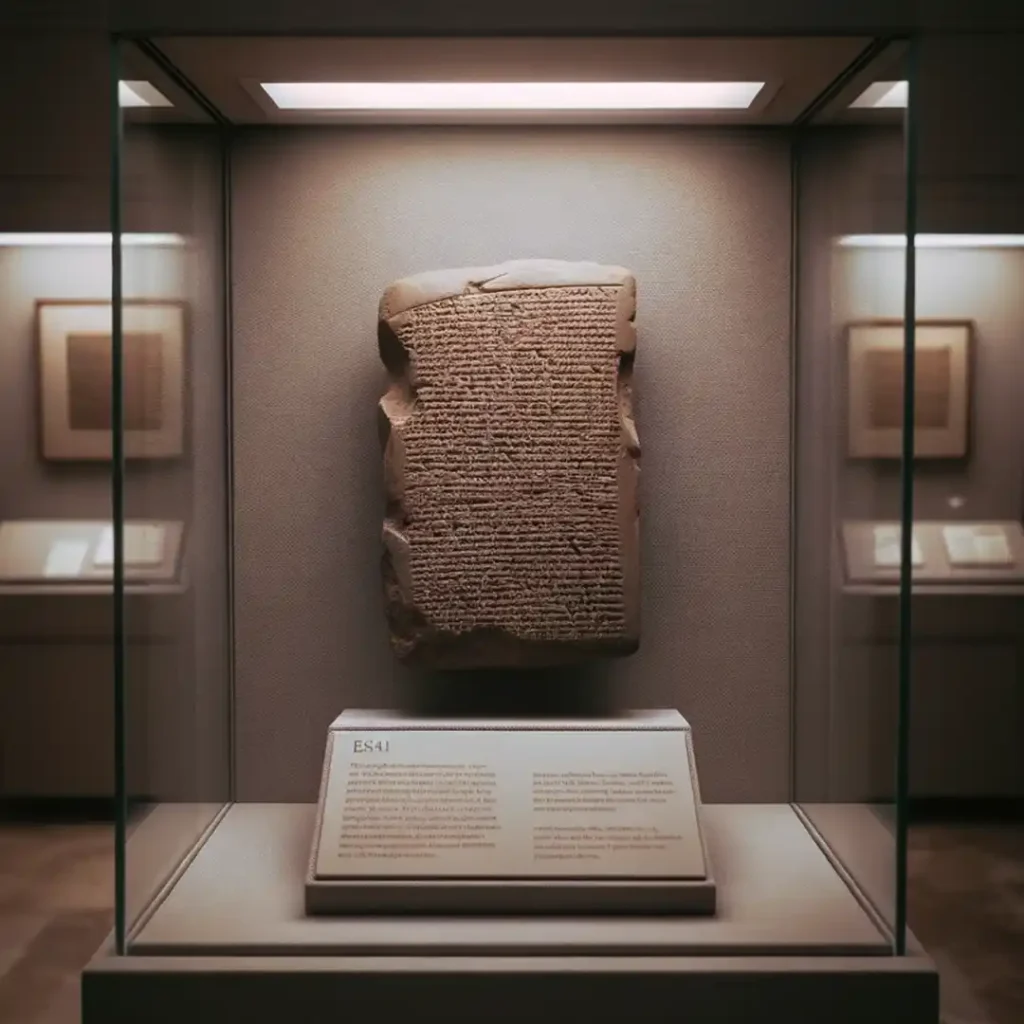
No transformative approach comes without its set of challenges, and differentiated teaching is no exception. However, with every hurdle I encountered in implementing this method, I also discovered innovative solutions that not only addressed the issue but also enhanced the overall learning experience. Here’s a breakdown of those challenges and the strategies I found to surmount them:
Common Hurdles in Implementing Differentiated Methods
Time Constraints: Designing individualized lesson plans and assessments for a diverse group of students can be time-consuming, often leaving educators feeling overwhelmed.
Classroom Management: Catering to varied learning paths might lead to a classroom that appears chaotic or unruly, especially when different groups of students are engaged in distinct activities.
Resource Limitations: The need for varied instructional materials can strain already limited resources, be it in terms of textbooks, technology, or supplementary materials.
Assessment Challenges: Evaluating students on varied tasks and ensuring fairness in grading can be daunting.
Resistance to Change: Both educators, accustomed to traditional methods, and students, wary of unfamiliar approaches, might resist this shift in teaching methodology.
Proactive Strategies to Overcome Them
Collaborative Planning: Team up with fellow educators to design and share differentiated lesson plans. Collaboration can lead to a rich pool of resources and lessen the individual planning burden.
Structured Flexibility: While differentiation might seem chaotic at first glance, having a clear structure and ground rules in place can maintain classroom discipline. Assign specific areas in the classroom for certain activities, establish clear timelines, and set behavioral expectations.
Maximizing Digital Resources: The internet is a treasure trove of resources. Platforms like Khan Academy, Coursera, or the Library of Congress offer a wealth of materials suitable for varied learning paths. Moreover, open-source resources can alleviate the financial strain of procuring new materials.
Rubric-Based Assessments: To ensure fairness in grading, use detailed rubrics that outline criteria for evaluations. This not only offers clarity to students but also ensures that assessments are objective and consistent.
Continuous Communication and Feedback: Engage with both students and educators regularly. Understand students’ apprehensions and address them, and share the benefits and successes of differentiated teaching with fellow educators to build support.
Tools and Resources for Differentiated Teaching in History

Embracing differentiated teaching is akin to embarking on a rich, exploratory journey. And just as any explorer needs a set of tools and resources, so too does the history educator looking to diversify their instruction methods. Over the years, I’ve encountered numerous tools that have enriched my teaching approach. Here’s a curated list:
Software and Platforms Tailored for History Educators:
Google Classroom: This platform provides a versatile environment for creating assignments tailored to individual or group needs. Its features like quizzes, questions, and material distribution allow for easy differentiation.
Padlet: An interactive canvas, perfect for creating timelines, sharing resources, or facilitating collaborative research on historical topics.
Edpuzzle: This tool lets educators customize video content. For a history class, you can pick a documentary and intersperse it with questions, voiceovers, or notes tailored for different learner groups.
Kahoot!: An interactive quiz platform. You can create quizzes that cater to different learning levels, ensuring that every student is challenged appropriately.
World History Atlas: This app provides detailed historical maps and timelines, making it a valuable resource for visual learners and those keen on understanding the geographical context of historical events.
Printable Resources, Activities, and Templates:
Graphic Organizers: These can be used to compare and contrast historical events, brainstorm on a topic, or analyze primary sources. For instance, Venn diagrams, cause-effect charts, or sequence maps.
Primary Source Analysis Templates: Encourage critical thinking by providing students with templates that guide them through the process of analyzing primary sources like letters, diaries, or photographs.
Thematic Unit Planners: These planners can help educators design a unit around a central historical theme, ensuring varied activities and resources that cater to different learners.
Historical Fiction Reading Guides: Using historical fiction can be a great way to engage learners. Reading guides can assist students in drawing connections between the fiction they’re reading and the actual historical events.
Interactive Notebook Templates: Especially popular among tactile and visual learners, these templates allow students to create their own history notebooks, filled with diagrams, notes, and personal reflections.
Role-Playing and Simulation Activities: Printable cards and guides that facilitate role-playing sessions, where students can step into the shoes of historical figures or ordinary people from a particular era.
Conclusion
History, in its essence, is more than just a sequence of events—it’s the collective story of humanity. As we stand at the crossroads of educational evolution, it becomes imperative to question: How do we want this story to be told to the next generation? And more crucially, how can we ensure that every student, with their diverse backgrounds, abilities, and interests, finds a piece of themselves in this vast narrative?
The future of history education beckons a shift—from the monolithic, one-size-fits-all approach to the dynamic, inclusive realm of differentiated teaching. By embracing differentiation, we’re not just changing how history is taught; we’re redefining the very experience of learning it. A classroom where each student dives deep into history, driven by curiosity, personal connection, and relevance, is a vision worth striving for.
To my fellow educators, the call to action is clear. We have the tools, the resources, and the methodologies. The next step is implementation, reflection, and continuous evolution. To stakeholders, parents, and policymakers, your role is pivotal. Support this transformation, be it through resources, policy changes, or simply understanding and advocating.
History, as it’s often said, is written by the victors. But in our classrooms, let’s ensure it’s learned by all, in a manner that’s engaging, inclusive, and reflective of the diverse tapestry that is humanity.
Further Reading
National Council for the Social Studies. (2017). Effective Practices for Powerful Teaching and Learning in Social Studies. NCSS.
